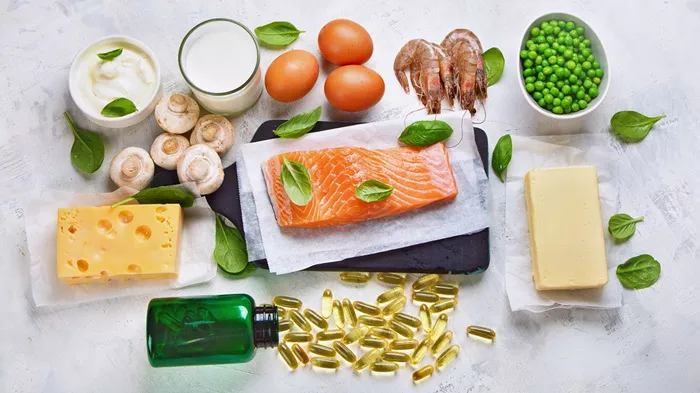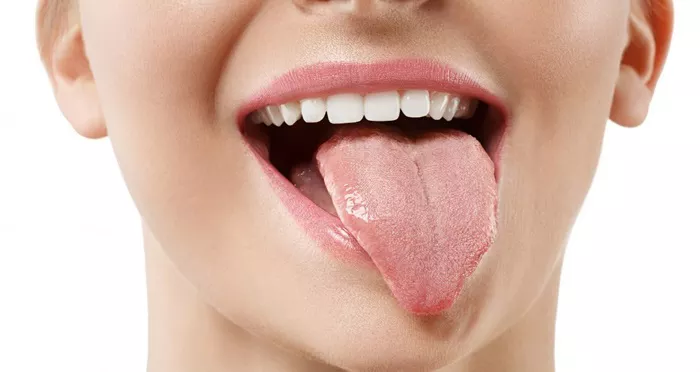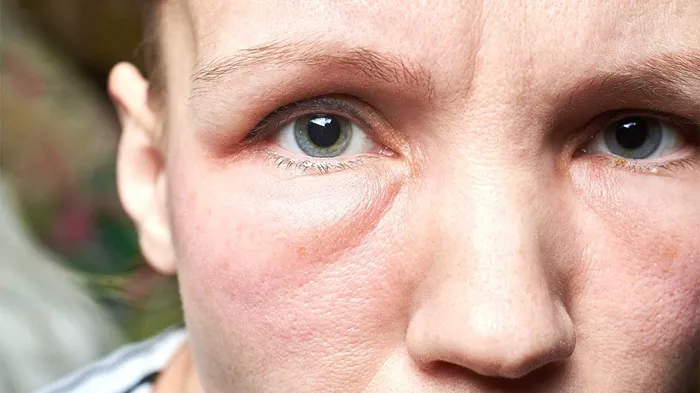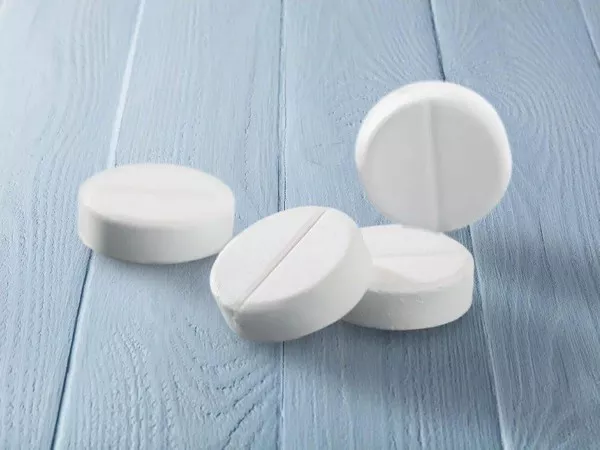Raw skin can be a distressing condition, whether it’s caused by a scrape, burn, allergic reaction, or a skin condition like eczema. The exposed, sensitive nature of raw skin makes it vulnerable to infection, further irritation, and slower healing. Knowing what to apply to raw skin is crucial for promoting a healthy and rapid recovery. This article will explore a variety of substances and products that can be beneficial for healing raw skin, based on scientific knowledge and professional skincare and beauty expertise.
Understanding Raw Skin
Before delving into the remedies, it’s important to understand what raw skin is. Raw skin refers to the skin that has lost its outer protective layer, the epidermis. This layer acts as a barrier against external factors such as bacteria, chemicals, and moisture loss. When the epidermis is damaged, the underlying layers of the skin, such as the dermis, are exposed. This makes the skin more sensitive, prone to pain, and at a higher risk of infection.
Common causes of raw skin include:
Trauma: Cuts, scrapes, and abrasions from accidents, sports injuries, or even minor mishaps around the house.
Burns: Thermal burns from heat sources like fire, hot liquids, or steam. Chemical burns can also occur from contact with harsh substances such as acids or alkalis.
Allergic Reactions: Contact dermatitis, which can be triggered by substances like certain metals (e.g., nickel), plants (e.g., poison ivy), or skincare products.
Skin Conditions: Eczema, psoriasis, and other inflammatory skin diseases can cause the skin to become raw, itchy, and inflamed.
Natural Substances for Healing Raw Skin
Aloe Vera
Aloe vera is a well – known plant with remarkable healing properties for the skin. It contains a gel – like substance within its leaves that is rich in vitamins (A, C, E, and B – complex), minerals (calcium, magnesium, zinc), and antioxidants. These components work together to soothe and heal raw skin.
Anti – Inflammatory Properties: Aloe vera contains compounds such as aloin and anthraquinones, which have anti – inflammatory effects. This helps to reduce redness, swelling, and pain associated with raw skin. For example, in cases of minor burns or sunburns, applying aloe vera gel can provide immediate relief.
Moisturizing Effect: The gel helps to lock in moisture, preventing the raw skin from drying out. Dry skin can impede the healing process and cause further discomfort. By keeping the skin hydrated, aloe vera promotes cell regeneration and a smoother healing surface.
Antibacterial and Antifungal Properties: Aloe vera contains substances that can inhibit the growth of bacteria and fungi. This is important for preventing infections on raw skin, which is more susceptible to microbial invasion.
To use aloe vera on raw skin, you can either cut open a fresh aloe vera leaf and extract the gel directly or use a pure, commercial aloe vera gel. Gently apply a thin layer of the gel to the affected area 2 – 3 times a day. Avoid applying it if you have an allergy to aloe vera; a patch test on a small area of skin can be done first to check for any adverse reactions.
Honey
Honey has been used for centuries as a natural remedy for various skin conditions. It is a thick, sweet substance with numerous beneficial properties for raw skin.
Antibacterial Activity: Honey contains hydrogen peroxide, which is a natural antiseptic. It also has a high sugar content that creates an osmotic environment, drawing out moisture from bacteria and inhibiting their growth. This makes honey an effective agent for preventing and treating infections on raw skin.
Anti – Inflammatory Effects: Honey contains antioxidants and anti – inflammatory compounds that can reduce redness and swelling. It can soothe the pain and discomfort associated with raw skin, especially in cases of minor cuts and abrasions.
Moisturizing and Healing Promotion: Honey forms a protective layer over the raw skin, preventing moisture loss and providing a conducive environment for cell growth and repair. It also stimulates the production of collagen, a protein that is essential for skin elasticity and wound healing.
For raw skin, use raw, unpasteurized honey. Gently clean the affected area first, then apply a thin layer of honey. Cover it with a sterile bandage if necessary. Leave the honey on for about 15 – 20 minutes, then rinse it off with lukewarm water. Repeat this process 1 – 2 times a day.
Coconut Oil
Coconut oil is a popular natural ingredient in skincare due to its many benefits for the skin. It is rich in fatty acids, particularly lauric acid, which has antibacterial and anti – fungal properties.
Moisturizing and Soothing: Coconut oil forms a protective barrier on the skin, preventing moisture loss and keeping the raw skin hydrated. It can soothe the itchiness and discomfort associated with raw skin, especially in cases of eczema or allergic reactions.
Anti – Inflammatory Properties: The fatty acids in coconut oil can help reduce inflammation in the skin. This can be beneficial for reducing redness and swelling around the raw area.
Promotes Skin Repair: Coconut oil can penetrate the skin layers and nourish the cells, promoting the regeneration of new skin cells. This speeds up the healing process of raw skin.
To use coconut oil, make sure it is pure and unrefined. Warm a small amount of the oil between your fingers until it becomes liquid, then gently massage it into the raw skin. You can do this 2 – 3 times a day. However, some people may be allergic to coconut oil, so it’s advisable to do a patch test first.
Oatmeal
Oatmeal is not only a healthy breakfast option but also a great ingredient for soothing raw skin. It contains avenanthramides, which are antioxidants with anti – inflammatory properties.
Soothing and Anti – Itch: Oatmeal can help relieve the itching and irritation associated with raw skin. When made into a paste or bath, it can create a protective film on the skin, reducing the contact of irritants and providing relief.
Moisturizing: Oatmeal can absorb excess moisture while also helping to retain some moisture in the skin. This balance is important for maintaining the skin’s health during the healing process.
Gentle Exfoliation (in some cases): Finely ground oatmeal can provide gentle exfoliation, removing dead skin cells from the surface of the raw skin. This can help to promote the growth of new, healthy skin cells.
To use oatmeal on raw skin, you can make an oatmeal bath. Grind some rolled oats into a fine powder, then add about 1 – 2 cups to a warm bath. Soak in the bath for 15 – 20 minutes. For spot treatment, you can make an oatmeal paste by mixing a small amount of oatmeal with water to form a thick paste. Gently apply the paste to the raw skin and leave it on for 10 – 15 minutes before rinsing off.
Medicated Products for Healing Raw Skin
Antibiotic Ointments
Antibiotic ointments are commonly used to prevent and treat infections on raw skin. They contain ingredients such as bacitracin, neomycin, and polymyxin B.
Bacitracin: This antibiotic works by inhibiting the growth of bacteria, particularly those that can cause skin infections like staphylococci and streptococci. It is effective in preventing the spread of infection and promoting the healing of minor cuts, scrapes, and burns.
Neomycin and Polymyxin B: These antibiotics target a broader range of bacteria, including gram – negative and gram – positive bacteria. They are often used in combination to provide comprehensive protection against different types of microbial invaders.
When using antibiotic ointments, clean the raw skin gently with mild soap and water first. Then, apply a thin layer of the ointment to the affected area. Cover it with a sterile bandage if necessary. Follow the instructions on the product label regarding the frequency of application, usually 1 – 3 times a day. However, be aware that some people may be allergic to these antibiotics, and overuse can lead to antibiotic resistance.
Hydrocortisone Cream
Hydrocortisone is a type of corticosteroid that has anti – inflammatory and anti – itching properties. It is available in various strengths over – the – counter and by prescription.
Reducing Inflammation: Hydrocortisone cream works by suppressing the body’s immune response in the skin. This reduces the production of inflammatory mediators, such as cytokines, which are responsible for redness, swelling, and itching. It is particularly useful for treating allergic reactions, eczema, and other inflammatory skin conditions that cause raw skin.
Relieving Itchiness: The anti – itching effect of hydrocortisone cream provides much – needed relief for those with raw, itchy skin. It can help break the itch – scratch cycle, which can further damage the skin and delay the healing process.
For mild cases, a 1% hydrocortisone cream can be applied to the raw skin 2 – 3 times a day. However, for more severe cases, a stronger prescription – strength hydrocortisone cream may be required. Avoid using hydrocortisone cream on open wounds or for an extended period without consulting a doctor, as it can have side effects such as skin thinning, discoloration, and increased risk of infection.
Silver – Based Dressings
Silver – based dressings are often used in medical settings for treating wounds and raw skin. Silver has well – known antibacterial properties.
Antibacterial Action: Silver ions can penetrate the cell walls of bacteria and disrupt their normal metabolic functions. This inhibits the growth and reproduction of bacteria, reducing the risk of infection on raw skin.
Long – Lasting Protection: Silver – based dressings can provide a continuous release of silver ions over a period of time, offering long – term protection against bacterial contamination.
Moisture Management: Some silver – based dressings are designed to maintain a moist environment on the raw skin, which is optimal for wound healing. They can absorb excess exudate while keeping the wound bed hydrated.
These dressings come in different forms, such as gels, creams, and bandages. They are typically used in more severe cases of raw skin, such as large burns or chronic wounds. The application and frequency of use should be determined by a healthcare professional.
Skincare Products for Healing Raw Skin
Gentle Cleansers
When dealing with raw skin, it’s important to keep the area clean to prevent infection. However, harsh cleansers can further irritate the skin. Gentle, fragrance – free cleansers are the best option.
Cleansing without Irritation: These cleansers are formulated to remove dirt, debris, and bacteria from the skin without stripping away the natural oils or causing further damage. They often contain mild surfactants that are gentle on the skin’s surface.
pH – Balanced: A pH – balanced cleanser helps to maintain the skin’s natural pH level, which is slightly acidic. This acidic environment is beneficial for preventing the growth of harmful bacteria and promoting a healthy skin barrier.
Look for cleansers that are labeled as “gentle,” “for sensitive skin,” or “fragrance – free.” Gently wash the raw skin with lukewarm water and the cleanser, then rinse thoroughly. Pat the skin dry with a soft towel to avoid further irritation.
Moisturizers
Moisturizers are essential for healing raw skin as they help to keep the skin hydrated and promote the repair of the skin barrier.
Occlusive Moisturizers: These moisturizers form a physical barrier on the skin’s surface, preventing moisture loss. They are often made of ingredients such as petrolatum (vaseline), lanolin, and mineral oil. Occlusive moisturizers are particularly useful for very dry or cracked raw skin.
Humectant Moisturizers: Humectants attract and hold moisture from the environment into the skin. Ingredients like glycerin, hyaluronic acid, and propylene glycol are common humectants. They can help to hydrate the skin from within and improve its texture.
Emollient Moisturizers: Emollients smooth the skin by filling in the spaces between skin cells. They contain fatty acids and lipids that are similar to the skin’s natural oils, helping to improve the skin’s flexibility and appearance.
Choose a moisturizer that is suitable for your skin type and the severity of the raw skin condition. Apply the moisturizer gently to the affected area several times a day.
Sunscreen
Protecting raw skin from the sun is crucial for proper healing. Ultraviolet (UV) rays can damage the newly forming skin cells, increase the risk of scarring, and cause further inflammation.
Broad – Spectrum Protection: Look for a sunscreen that provides broad – spectrum protection against both UVA and UVB rays. UVA rays can penetrate deep into the skin and cause premature aging, while UVB rays are mainly responsible for sunburn.
High SPF: A sun protection factor (SPF) of 30 or higher is recommended for protecting raw skin. This indicates the level of protection against UVB rays.
Physical Sunscreens: Physical sunscreens, which contain ingredients like zinc oxide and titanium dioxide, are a good option for raw skin. They work by reflecting and scattering UV rays away from the skin, rather than absorbing them like chemical sunscreens. Physical sunscreens are generally less likely to cause irritation.
Apply a thin layer of sunscreen to the raw skin area before going outdoors. Reapply every 2 – 3 hours, especially if you are sweating or swimming.
Tips for Promoting Raw Skin Healing
Keep the Skin Clean and Dry
As mentioned earlier, keeping the raw skin clean is important for preventing infection. However, it’s also essential to keep the area dry, especially if it’s prone to sweating or excessive moisture. Moisture can create a breeding ground for bacteria and fungi, delaying the healing process.
Gently Pat Dry: After washing the raw skin, use a soft, clean towel to gently pat the area dry. Avoid rubbing, as this can cause further irritation.
Use Absorbent Materials: If the raw skin is in an area that gets sweaty, such as under the arms or on the feet, use absorbent materials like cotton pads or breathable bandages to keep the area dry.
Avoid Scratching and Picking
Itching is a common symptom of raw skin, but scratching and picking can cause further damage and delay the healing process. It can also introduce bacteria into the skin, increasing the risk of infection.
Distract Yourself: If you feel the urge to scratch, try to distract yourself by doing something else, such as reading, listening to music, or engaging in a hobby
.
Use Anti – Itch Products: As mentioned earlier, hydrocortisone cream or natural remedies like oatmeal can help relieve the itchiness.
Follow a Healthy Diet
A healthy diet can also play a role in promoting the healing of raw skin. Foods rich in vitamins, minerals, and antioxidants can provide the nutrients needed for skin repair and regeneration.
Vitamin C: Found in citrus fruits, strawberries, and bell peppers, vitamin C is essential for collagen synthesis. Collagen is a protein that gives the skin its strength and elasticity, and it is important for wound healing.
Vitamin E: This antioxidant is found in nuts, seeds, and vegetable oils. It helps to protect the skin from oxidative damage and can promote the healing of damaged skin cells.
Zinc: Zinc is involved in many cellular processes, including DNA synthesis and cell division. It is important for wound healing and can be found in foods like oysters, beef, and beans.
Get Enough Rest
Getting enough sleep and rest is crucial for the body’s overall healing process. During sleep, the body goes through various processes that help to repair and regenerate tissues, including the skin.
Adequate Sleep: Aim for 7 – 9 hours of quality sleep per night. Establish a regular sleep schedule and create a comfortable sleep environment.
Reduce Stress: Stress can also affect the skin’s healing process. Practice stress – reducing techniques such as meditation, yoga, or deep breathing exercises.
Conclusion
Healing raw skin requires a combination of proper care, the right products, and a healthy lifestyle. Whether you choose natural substances, medicated products, or skincare products, it’s important to consider the cause and severity of the raw skin condition. If the raw skin does not improve or shows signs of infection, such as increased redness, swelling, pain, or pus, it’s advisable to seek medical advice. By taking the right steps, you can help your raw skin heal quickly and effectively, restoring its health and appearance.
Related topics:
When to Use Toner in a Skincare Routine?



































